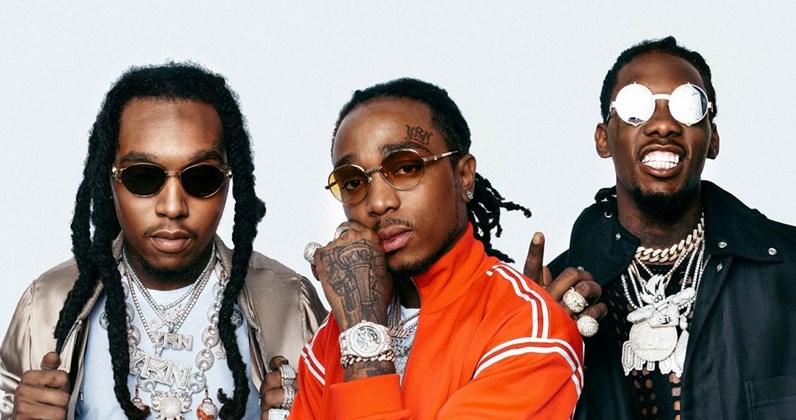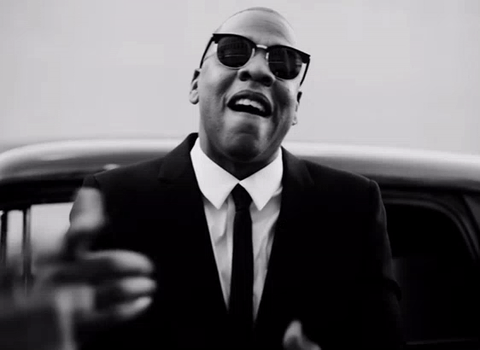It’s been less than eight years since Migos released their breakout hit, “Versace.” A lot has happened in hip-hop since then: Atlanta consolidated its position as the new rap capital, Drake remixed every song on SoundCloud, Rich Gang caterwauled on the Hot 100, Boomers posted the final dissents against “mumble rap,” “skinny jeans,” and so on to Facebook. In revolutionary spirit, millennials fought back, and fought dirty, pitting Migos against the Beatles to spite the rockists and the “real rap” originalists once and for all. The early Migos hits, “Versace” through “Handsome and Wealthy” and “Hannah Montana,” opened the latest frontier in hip-hop history. Quavo, Offset, and Takeoff were high, mighty, and boundless.
Now several albums deep, Migos struggles to keep pace with a new generation of rap stars who aren’t even that much younger than them. In the eight-year span since “Versace,” Migos have aged more conspicuously than any other breakout rappers save Future. Granted, Takeoff has that exquisite gravel in his voice; he’s always sounded like someone’s swaggy granddad. Sure, Quavo turned 30 a couple of months ago, but Offset and Takeoff are still in their 20s. So why do these guys seem so suddenly outmoded? Is it the music or is it the culture that’s aged them into early emeritus status?https://open.spotify.com/embed/episode/4Rl6uUr9FBveD9PtyJ5g3Y
On Friday, Migos released Culture III, the third installment in a series and their fourth studio album overall. Their previous album, Culture II, dropped three years ago, and they’ve otherwise tended to their respective solo careers with mixed success. I’ve lived to regret and retract my earlier wish that Quavo would go solo. Ultimately, Migos is nothing without Migos. But even together, Migos are a strange group to process on an album-to-album basis. Culture spawned the group’s biggest hit, “Bad and Boujee,” Culture II includes “MotorSport” and “Walk It Talk It,” and yet these albums, as cohesive records, have never been essential listening. The group’s insistence on serializing these albums suggests either a strange miscalculation of their critical standing and brand value or a reluctance to think too hard about the titles for these things.
In any case, Culture III sounds a bit more energetic than the previous installment in this series. It’s been some time since Migos sounded so desperate to impress. The intro, “Avalanche,” samples “Papa Was a Rollin’ Stone” by the Temptations and pushes the group’s collective breath control, on a song with no hook, to the limit. “Straightenin” and “Modern Day” are far more conventional records for the group and they’re the album’s best evidence that they’re still years away from needing to reinvent themselves. “Vaccine,” a prosperity gospel for the end of the world, sounds truest to the group’s foundational wit and weirdness.
The two posthumous collaborations, “Light It Up” featuring Pop Smoke, and “Antisocial” featuring Juice WRLD, stuck with me longer than Future and Drake’s contributions, but even the superior collaborations got me scratching my chin, wondering where this group’s musical niche went. These guys could make a song with anyone at this point. “Migos featuring Justin Bieber”: once a novelty, now the norm; now the Zoomers get to take this state of affairs for granted. Migos skipped straight to late-career Snoop Dogg levels of promiscuity on the Hot 100. Spotify counts 212 million streams for Katy Perry and the group’s “Bon Appetit,” and yet I often feel I’m the only critic who will cop to loving this particular mess of a song. There’s peril at this level of crossover success and stylistic ubiquity. It’s hard to discern where Migos’s albums end and the rest of popular music begins.
If you pour 3 cups of sugar into a liter of water, have you improved the water or just ruined the sugar? Listen to “What You See”—a muggy trap ballad with Bieber—and answer the question. Ever since Drake annexed “Versace,” Migos have improved upon every brand but their own. Outside of these albums, Migos play a peculiar and, I’d argue, unsuitable role in the celebrity industrial complex. On the one hand you have Drake, a hyper-celebrity for whom lyrics and headlines are one and the same; on the other hand you have Travis Scott, an anti-celebrity whose music prohibits and obliterates any deeper curiosity about the misfit who made it. And then you have Migos, a supergroup always struggling to break either way, bad at being celebrities but celebrities nonetheless.
Culture III holds no new dimensions nor insights about these guys, neither as celebrities nor musicians. There’s certainly good music on Culture III, and we needn’t underestimate the group. Sure, the Migos Flow can only carry you so far and for so long, but “so far” is still pretty damn far. It’s carried Migos eight years into a future so advanced that “Versace” has become classical music and everything after “Fight Night” has become easy listening for the very suddenly grown-n-sexy.





Recent Comments